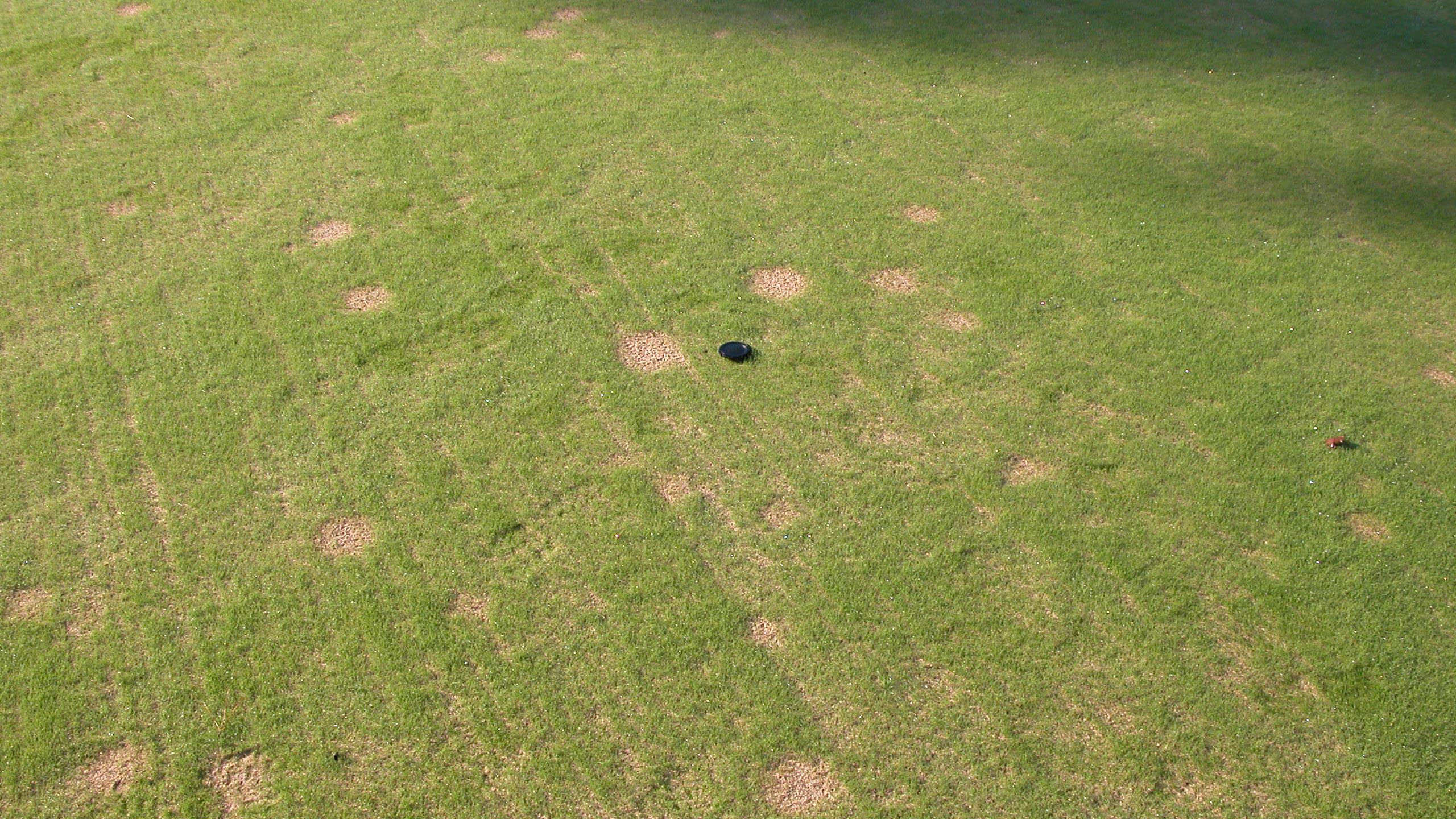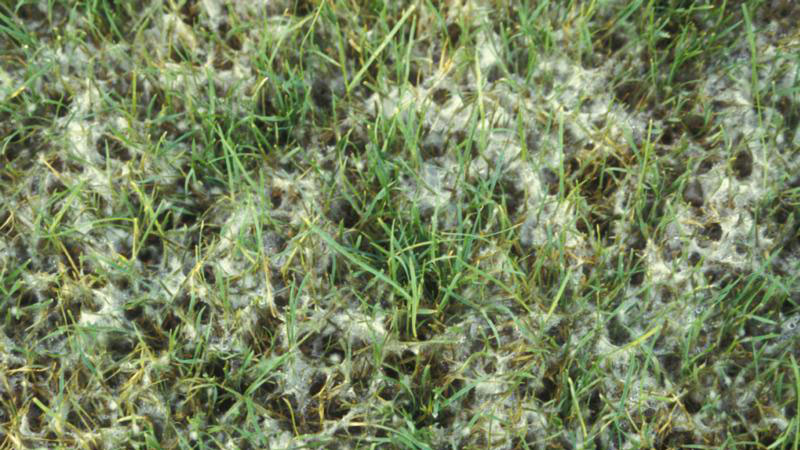Damping Off in Turf
en Español / em Português
El inglés es el idioma de control de esta página. En la medida en que haya algún conflicto entre la traducción al inglés y la traducción, el inglés prevalece.
Al hacer clic en el enlace de traducción se activa un servicio de traducción gratuito para convertir la página al español. Al igual que con cualquier traducción por Internet, la conversión no es sensible al contexto y puede que no traduzca el texto en su significado original. NC State Extension no garantiza la exactitud del texto traducido. Por favor, tenga en cuenta que algunas aplicaciones y/o servicios pueden no funcionar como se espera cuando se traducen.
Português
Inglês é o idioma de controle desta página. Na medida que haja algum conflito entre o texto original em Inglês e a tradução, o Inglês prevalece.
Ao clicar no link de tradução, um serviço gratuito de tradução será ativado para converter a página para o Português. Como em qualquer tradução pela internet, a conversão não é sensivel ao contexto e pode não ocorrer a tradução para o significado orginal. O serviço de Extensão da Carolina do Norte (NC State Extension) não garante a exatidão do texto traduzido. Por favor, observe que algumas funções ou serviços podem não funcionar como esperado após a tradução.
English
English is the controlling language of this page. To the extent there is any conflict between the English text and the translation, English controls.
Clicking on the translation link activates a free translation service to convert the page to Spanish. As with any Internet translation, the conversion is not context-sensitive and may not translate the text to its original meaning. NC State Extension does not guarantee the accuracy of the translated text. Please note that some applications and/or services may not function as expected when translated.
Collapse ▲Symptoms
Damping off is a seedling disease that may develop before or after the emergence of turfgrass seedlings. Sparse emergence of seedlings and slow establishment occurs when seeds are infected prior to emergence. When the disease develops after emergence, seedlings initially appear flaccid and twisted as if suffering from wilt. The seedlings continue to decline, turning dark in color and greasy in appearance, and then quickly disintegrate to leave areas of bare soil. Damping off initially develops in localized spots, but the disease often spreads rapidly to injure large areas. In severe cases, tufts of mycelium may be observed in affected areas when the leaves are wet.
Development Factors
Turfgrasses are most susceptible to damping off during germination and seedling emergence. After emergence, the turf gradually becomes resistant to the disease as it matures. Damping off is most severe when temperatures or light levels are unfavorable for seedling growth. Pythium causes the majority of damping off problems during warm or hot weather, whereas Rhizoctonia is more prevalent during cool weather.
The disease is encouraged by excessive nitrogen fertility and extended periods of leaf wetness. High seeding rates encourage damping off by producing dense populations of seedlings that mature more slowly and remain wet for extended periods of time.
Cultural Control
Use recommended seeding rates, which are designed to speed the maturation of seedlings and minimize the window of time when they are susceptible to damping off. Apply a high phosphorous (P) starter fertilizer at the time of seeding to provide 1 pound of P per 1,000 square feet. To encourage rapid germination, water lightly and frequently to keep the seedbed moist but not saturated. As the seedlings emerge and develop a root system, gradually reduce the irrigation frequency, and ensure that the seedling leaves dry completely in between irrigation cycles. Apply a thin layer of straw or other mulching material to hold in moisture, but do not over-apply as this will retain too much moisture and increase the risk of damping off. A second fertilizer application is typically made around the time of the first mowing, but do not apply more than 0.5 pound of readily available nitrogen per 1,000 square feet. Do not attempt to establish turfgrasses in low-lying, wet areas where damping off is most severe.
Chemical Control
Fungicides are available for control of damping off, and may be applied as seed-treatments or directly to the seedbed. If damping off is observed, submit a sample to a diagnostic lab for accurate diagnosis because different fungicides are needed for control of Pythium and Rhizoctonia species. Note that fungicides labeled for damping off only have activity against Pythium species. The fungicides labeled for brown patch are needed to provide effective control of Rhizoctonia damping off. Please reference the disease profiles for Pythium blight and/or brown patch for fungicide recommendations if you know which pathogen is prevalent in your turf.
Species Data
- HOST SPECIES
- bentgrass, bluegrasses, fescues, ryegrasses
- MONTHS WITH SYMPTOMS
- all
- STAND SYMPTOMS
- spots, patches (4 to 12 inches), or irregular distribution across turf stand
- FOLIAR SYMPTOMS LOCATION / SHAPE
- blighting of entire leaves
- FOLIAR SYMPTOMS COLOR
- tan, brown, or black
- ROOT / CROWN SYMPTOMS
- roots, stolons, rhizomes, and/or crowns dark brown or black
- FUNGAL SIGNS
- mycelium or none




